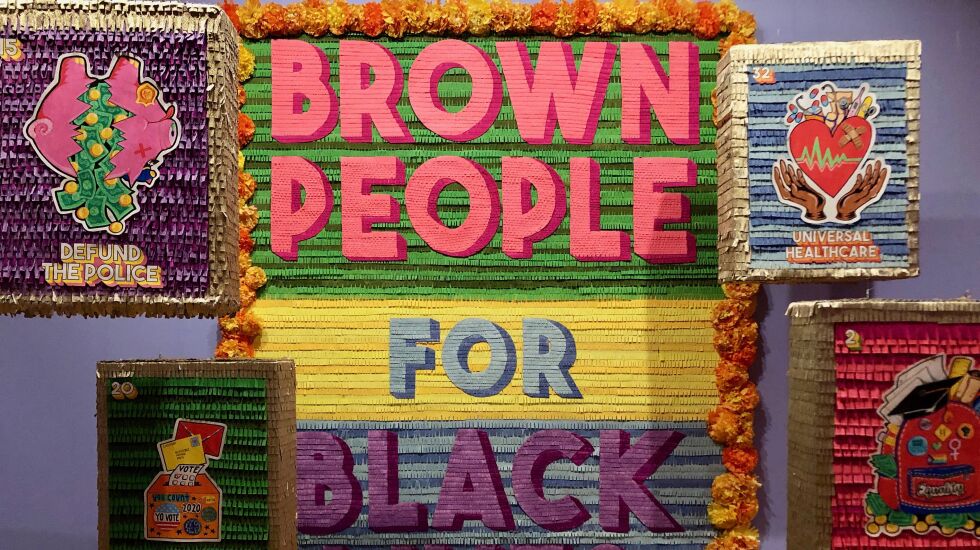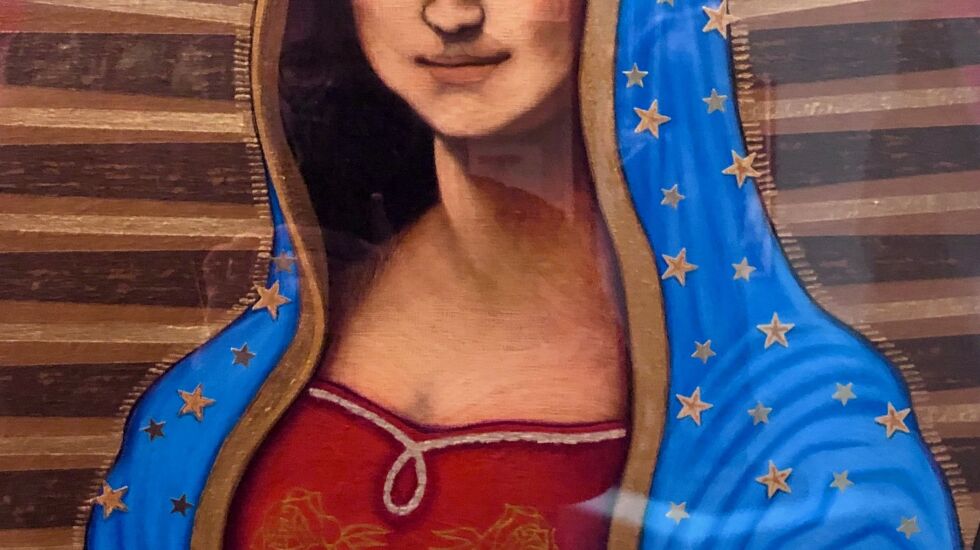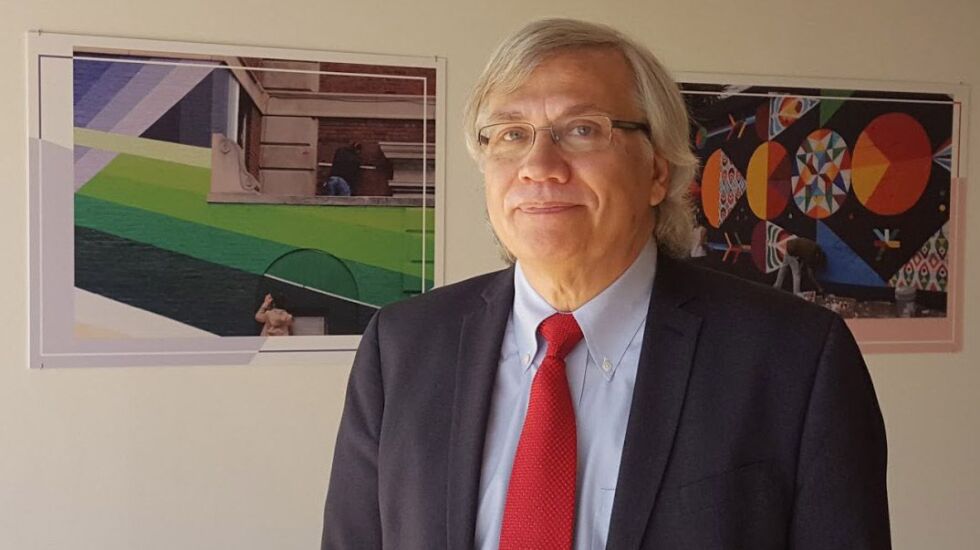
Oh, you’ve got to tell the story.
Not to take anything away from my colleague Ambar Colón, whose excellent article in Wednesday’s paper shared the news that Carlos Tortolero, founder of the National Museum of Mexican Art, is retiring. There was a lot of real estate to cover — quotes from the ever-effusive Tortolero, the search for a new museum president, the honors and accolades rightly laden on the Pilsen landmark.
But three simple words, “opened in 1987,” just don’t do justice to the reality, and spur me to blow the dust of decades off them. Opened why? Opened how? How did a history teacher at Bowen High School — as Tortolero was — start what became the preeminent institution in the country showcasing Mexican, Latino and Chicano art?
It should be part of Chicago lore, alongside Uno’s inventing deep dish pizza in 1943. But it isn’t. The only reason I know is from interviewing Tortolero for my recent book, “Every Goddamn Day.” But since every Sun-Times reader hasn’t read that book, alas, I should lay the tale out here, briefly.
Wander back in time, not to 1987, but to September 1982. Tortolero was disgusted with a Chicago Public Schools system that would treat Spanish-speaking students as if they were learning disabled. Where Mexican culture was pretty much limited to the bad guys at the Alamo. Inclusivity is such a mantra today, we forget the headlock that white culture had on education not so long ago, and what did show up in classrooms about Mexican history echoed the joke about food at a Catskills resort: lousy, and in such small portions.
“Beyond bad,” Tortolero said. “The misinformation was unbelievable. No one knew about Mexican culture. The students, young people, don’t know the impact of Mexico. These kids were not getting any of their history. All the great things. They knew nothing about it.”
So he met with five other CPS staffers on Sept. 15, 1982, at Benito Juarez High School. That date was picked deliberately: the evening before Mexican Independence Day. “El Grito” the anniversary of Father Miguel Hidalgo ringing his church bell and calling for the Spanish oppressors to be driven out. “The Cry of Dolores” — a perfect day to start a revolution.
“Time for us to preserve our culture,” said Tortolero. “To share our culture too.”
Sharing takes money, and hard work. They raised $900 in the first year. Tortolero credits Harold Washington’s election with helping — seeing the Black community mobilize inspired Hispanic Chicagoans to get busy too.
In 1989, they raised $2 million.
To understand how ahead of the curve Tortolero was, the Smithsonian Institution is only now organizing the National Museum of the American Latino in Washington, D.C., which immediately veered into a ditch with its first, introductory exhibit on Latino youth movements. The show’s politics inflamed conservative Latinos — you don’t have to be white to reject history that makes you uncomfortable. Some demanded the museum be defunded.
That’s a pity, because part of what makes the Museum of Mexican Art so engaging, to me, is its unashamed radicalism. From denunciations of big agriculture, like Ester Hernandez’s “Sun Mad,” to calls to defund the police, to the ofrenda for Adam Toledo displayed last year. The NMMA always offers much to think about for those of us who can, you know, think about stuff.

That said, my favorite piece is still Cesar Augusto Martinez’s gentle “Mona Lupe,” a delightful commingling of Our Lady of Guadalupe and the Mona Lisa — better than the original, in my mind, because, unlike at the Louvre, you don’t have to claw your way around 200 tourists in a room that smells like a high school gym locker room to get a glimpse.
I’ve plugged the museum before, because it drives me crazy that most Chicagoans haven’t been. Almost every day I hear from suburbanites who regard the city with crawling terror, and I want to shake them and say, “Snap out of it! Go to the National Museum of Mexican Art. It’s free. Spend an hour. Slide over to 5 Rabanitos for lunch. It isn’t free, God knows, but it’s so worth it. Nobody will harm you. You’ll return to the safety of your suburban home delighted, fed, and less afraid. And you don’t even need to thank Carlos Tortolero for the opportunity, because I will thank him for you.”
Thanks, Carlos.








